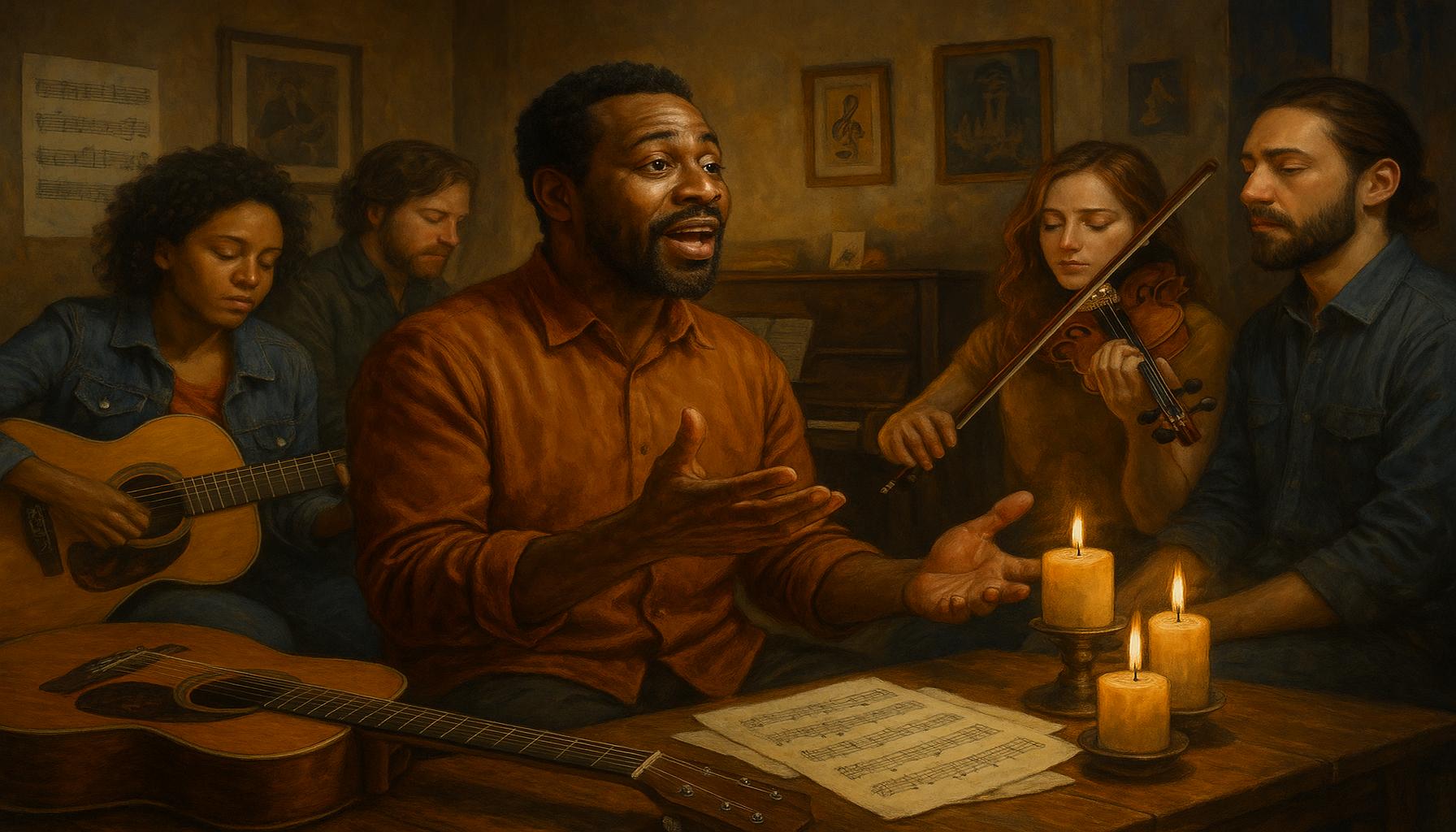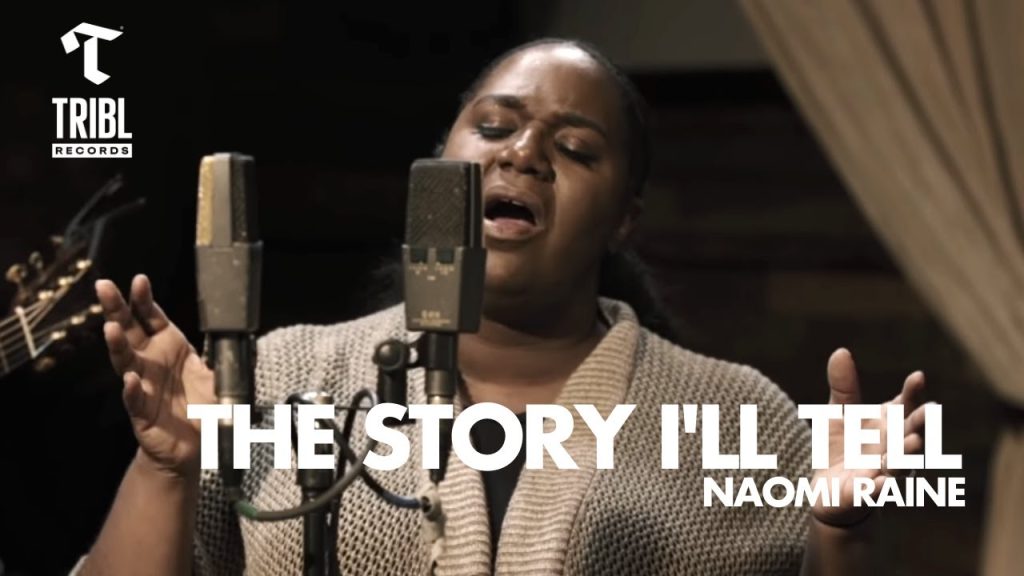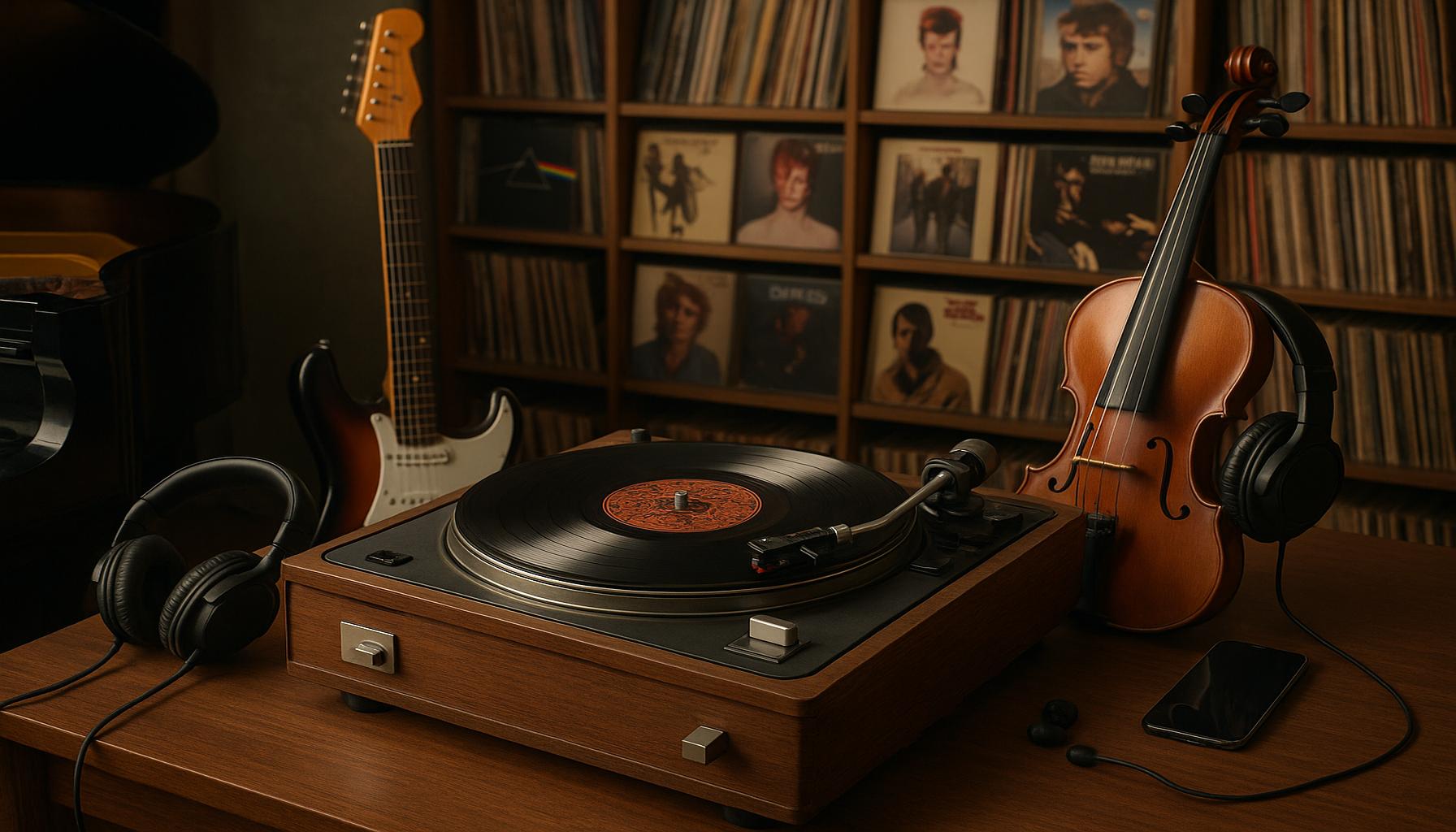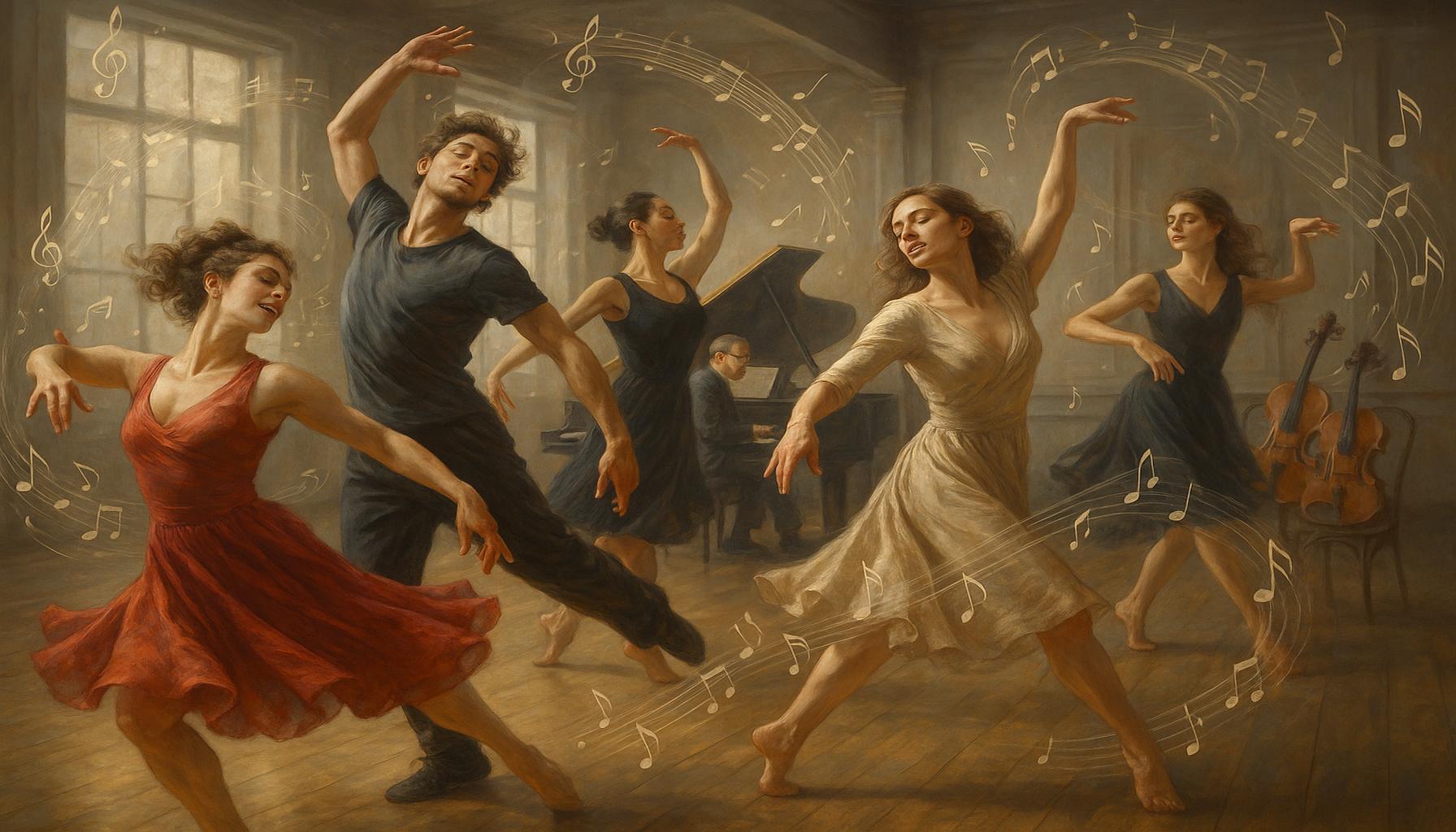Music and Narrative: Telling Stories Through Songs

The Essence of Musical Storytelling
Throughout history, music has served as a powerful vehicle for storytelling, transforming simple melodies and rhythms into profound narratives. Songs have the unique ability to convey deep emotions, experiences, and tales that resonate with listeners across generations. This intricate blend of music and narrative allows artists to craft memorable stories that linger long after the final note fades away. The enduring connection that listeners have with songs often stems from how effectively these stories echo their personal experiences or sentiments.
When examining music as a storytelling medium, several key aspects come into play:
- Lyricism: The words in a song act as the narrative thread that weaves together an intricate tapestry of stories rich with personal, political, or universal themes. Artists like Leonard Cohen, with his poetic prowess, often delve into existential themes that challenge listeners to reflect on the human experience.
- Melody: The tune enhances the narrative by expressing various emotional states—be it joy, heartbreak, or nostalgia. A powerful example is the contrast between the upbeat tempo of Pharrell Williams’s “Happy” and the sorrowful balladry of Adele’s “Someone Like You,” where the melodies magnify the sentiments of the lyrics.
- Context: Many songs are deeply rooted in cultural or historical events, providing layers of meaning. For instance, Bruce Springsteen’s “Born in the U.S.A.” reflects the struggles of working-class America during the 1980s, making its anthemic sound all the more poignant when understood through its socio-political lens.
Iconic artists like Bob Dylan and Taylor Swift exemplify the mastery of storytelling through music. Dylan’s “Tangled Up in Blue” unfolds a complex narrative that shifts perspectives, inviting listeners to immerse themselves in the characters’ lives. Meanwhile, Swift’s “The Story of Us” reflects personal experiences of heartbreak and disconnection, allowing fans to connect intimately with her journey. The narratives woven into their music encourage audiences to explore their own interpretations and emotions, fostering a shared experience between artist and listener.
Exploring the Depth of Storytelling in Different Genres
As we delve into the art of storytelling in music, it is essential to explore how different genres approach narrative. Country music, for instance, often tells vivid stories of heartbreak, love, or rural life, with artists like Johnny Cash and Carrie Underwood crafting songs that resonate deeply with their audience. In contrast, hip-hop utilizes the medium of storytelling to convey personal experiences and societal issues, with artists like Nas and Kendrick Lamar addressing themes of struggle and identity through their lyrics.
The impact of storytelling on listener engagement cannot be overstated. Songs that tell compelling stories tend to create stronger connections with audiences, encouraging them to sing along, share their interpretations, and even revisit specific tracks to uncover deeper meanings. As music continues to evolve, the potency of narrative within it remains a pivotal aspect of its emotional appeal.

In conclusion, as we embrace the journey through the fascinating world where music and narrative intertwine, we uncover the profound ways in which songs tell stories that echo through our lives. From the richly layered lyrics to melodious compositions, each aspect contributes to an immersive experience that not only entertains but also invites reflection and connection.
DIVE DEEPER: Click here to uncover the secrets of creative writing
The Power of Lyrics in Musical Narratives
At the heart of many memorable songs lies the lyricism that shapes their narrative. Lyrics are the lifeblood of musical storytelling, providing a direct line to the emotions, conflicts, and resolutions that define the human experience. For artists, crafting poignant lyrics is akin to painting a vivid picture; each word is a brush stroke contributing to a larger mural of sentiment and idea. Celebrated songwriters, such as Stephen Foster and Joni Mitchell, have demonstrated this mastery by weaving personal anecdotes and universal truths into their music, inviting listeners to step into their worlds.
When songs utilize strong narrative elements, they often take the listener on a journey, moving through different scenes and emotions as if flipping through the pages of a compelling novel. Consider the storytelling prowess of Bruce Springsteen, whose lyrics in “The River” recall memories of youthful dreams and the stark realities of adult life. Through rich imagery and relatable themes, he connects listeners to their own life experiences, making them feel as though they are part of the story unfolding before them.
Emotional Resonance and Musical Composition
The interplay between melody and lyrics amplifies the emotional depth of a song’s narrative. A well-composed melody can accentuate the message behind the words, creating a more profound impact on the listener. For example, the haunting melodies found in Simon & Garfunkel’s “The Sound of Silence” underscore the song’s themes of isolation and despair, thus elevating the lyrical content. Conversely, the lively tempo and bright arrangement of songs like Katy Perry’s “Firework” instill a sense of hope and empowerment, effectively mirroring the uplifting message of the lyrics.
There are several key components that contribute to how music and narrative interact:
- Imagery: Descriptive language in lyrics paints vivid pictures for listeners, allowing them to visualize scenarios and emotions. Iconic examples include the “whiskey on his breath” in Chris Stapleton’s songs, which brings to life a struggling character.
- Character Development: Many songs feature distinct characters whose stories unfold within the lyrics. In a narrative like “Jolene” by Dolly Parton, the narrator’s vulnerability creates an emotional weight that captures the listener’s attention.
- Thematic Consistency: Strong storytelling in music often revolves around central themes such as love, loss, and redemption. Artists like Adele or Ed Sheeran frequently return to these themes, crafting relatable stories that make listeners feel understood.
The ability to evoke feelings through music makes songs a unique storytelling format, one that transcends cultural, geographical, and temporal boundaries. As a result, narratives encapsulated in music resonate across different demographics, each listener taking away a personalized interpretation of the artist’s intended message. In this way, music and narrative become intertwined, creating a shared human experience that can be both transformative and empowering.
| Advantage | Description |
|---|---|
| Emotional Connection | Songs often evoke strong feelings, allowing listeners to feel empathy and understanding for the stories being sung. |
| Cultural Reflection | Musical narratives can capture cultural histories and personal experiences, enriching listeners’ awareness of their own backgrounds. |
Music serves not only as entertainment but as a powerful narrative form that helps us understand the human experience. When songs tell stories, they do more than just relay events; they create a symbolic representation of life’s events, feelings, and challenges. Through lyrical techniques and melody, artists can encapsulate profound themes such as love, loss, and perseverance. Notably, one of the distinct advantages of storytelling through music is the way it promotes an emotional connection between the artist and the audience. This connection invites listeners to immerse themselves in the narrative, making the experience deeply personal and reflective. When the lyrics resonate with individual experiences, they foster a sense of belonging and recognition.Furthermore, the integration of cultural elements within musical narratives provides insight into societal values, traditions, and issues, making music an effective medium for cultural exchange and education. Artists like Bob Dylan and Leonard Cohen exemplify this by weaving in social commentaries within their works, encouraging listeners to reflect on contemporary issues through the lens of music.
DIVE DEEPER: Click here to uncover the evolution of crafting
Genres That Excel in Storytelling
While lyrics play a vital role in musical narratives, the genre of music often serves as a defining framework that shapes how stories are told. Different genres bring unique storytelling conventions, and each provides a lens through which audiences can experience the narrative. For instance, country music is renowned for its storytelling prowess, often encapsulating tales of hardship, heartache, and resilience. Songwriters like Johnny Cash and Miranda Lambert excel in crafting narratives that are steeped in authenticity and raw emotion, making their songs resonate deeply with listeners.
In contrast, hip-hop presents a powerful platform for storytelling that often incorporates real-life experiences, social commentary, and cultural narratives. Artists like Kendrick Lamar and Nas skillfully weave intricate tales that explore personal, societal, and political themes. In “The Message,” Grandmaster Flash and the Furious Five vividly depict the struggles of urban life, painting a portrait that encourages empathy and understanding while simultaneously serving as a critique of systemic issues.
The Role of Cultural Context in Music Narratives
The cultural backdrop of a song also shapes its narrative, influencing both the content and the way it is interpreted by listeners. Songs like “La Bamba” and “Macarena” highlight the fusion of cultural elements with infectious rhythms, inviting audiences to participate in a collective experience. These songs not only tell stories but also celebrate cultural heritage, allowing listeners to connect with traditions and experiences that may differ markedly from their own.
Additionally, genres like folk music are steeped in tradition and community, often sharing stories that reflect local histories, myths, and folklore. The storytelling in folk songs, as heard in the works of Woody Guthrie or Joan Baez, is often rooted in social justice themes that challenge listeners to reflect on their own beliefs and values. Such narratives engage listeners in profound ways, prompting them to question and consider the societal context in which they live.
The Influence of Performance and Presentation
Beyond the lyrics and melodies, the performance aspect of music is crucial in conveying narrative. A passionate performance can elevate a song’s story, allowing emotions to pour forth in ways that connect deeply with the audience. When artists like Bruce Springsteen or Beyoncé take the stage, their physical expressions, vocal dynamics, and stage presence breathe life into the narratives, transforming a song into a captivating story that resonates on multiple levels.
Music videos also play a vital role in expanding the narrative experience. Visual storytelling complements the auditory elements, providing context and enhancing the emotions conveyed through the lyrics. In “This Is America” by Childish Gambino, the imagery and symbolism create a powerful extension of the narrative, addressing themes of gun violence, racism, and cultural identity in a starkly visual format.
As we delve deeper into the intricate relationship between music and narrative, it becomes evident that songs do much more than entertain. They serve as vehicles for stories that reflect the complexities of the human experience, inviting audiences to explore their narratives, emotions, and connections to the world around them. By embracing the various genres, cultural contexts, and performance styles that contribute to musical storytelling, listeners can appreciate the multifaceted nature of songs and the profound messages they convey.
DIVE DEEPER: Click here to discover the beauty of vertical gardening
Conclusion
In conclusion, the interplay between music and narrative is a rich and vibrant tapestry that captures the essence of storytelling in ways that transcend mere words. Through various genres, each with its own unique conventions, the art of storytelling is uniquely expressed and experienced. From the heart-wrenching tales of **country music** to the impactful narratives embedded in **hip-hop**, songs offer us insights into the human experience, reflecting our joys, struggles, and collective memories.
Furthermore, the cultural context and performance elements amplify these narratives, allowing artists to convey emotions that resonate deeply with their listeners. The fusion of sound, visual imagery, and personal experience creates an atmosphere where **audiences** are not only passive recipients of stories but active participants in the emotional journey. As seen in powerful music videos and electrifying live performances, the presentation adds a vital dimension that enhances the narrative experience.
This compelling relationship between music and storytelling invites us to explore diverse perspectives, instilling empathy and understanding. Each song serves as a reminder that through melody and lyric, we can navigate complex social issues and celebrate cultural diversity. In a world where communication often falls short, the narratives woven into music become a source of connection, fostering a deeper appreciation for the stories that shape our lives. As listeners, let us continue to cherish and discover the myriad ways songs tell stories and connect us all.


